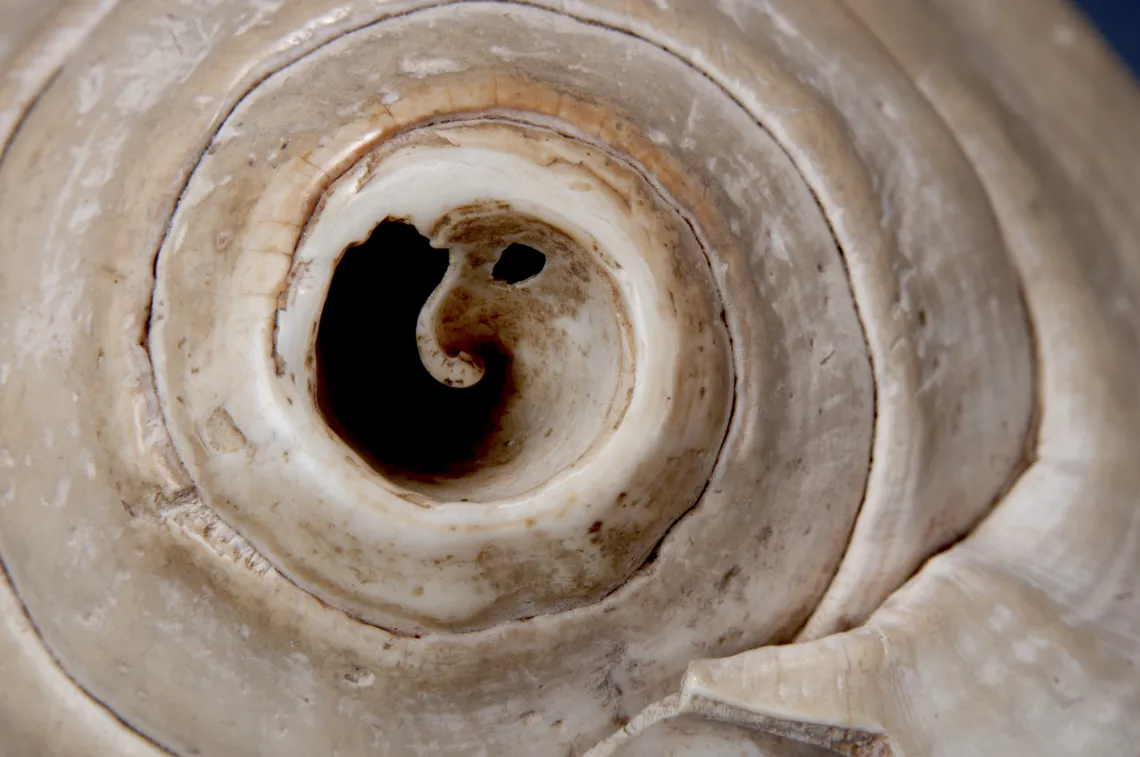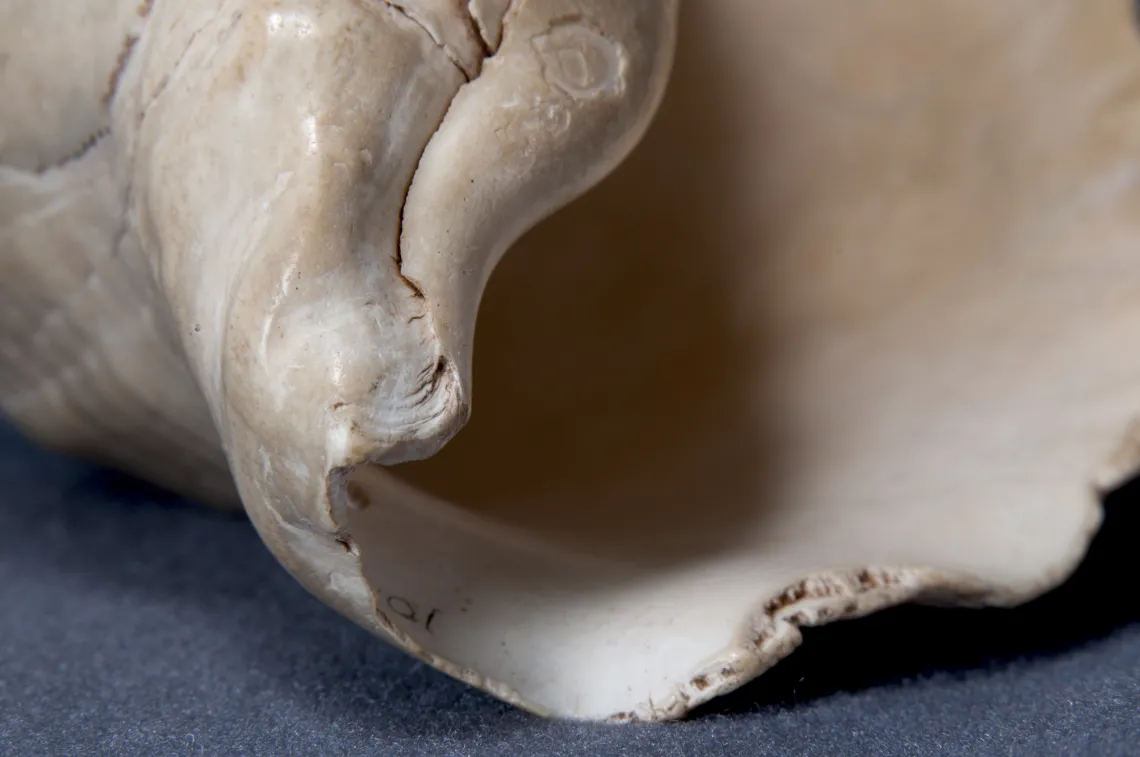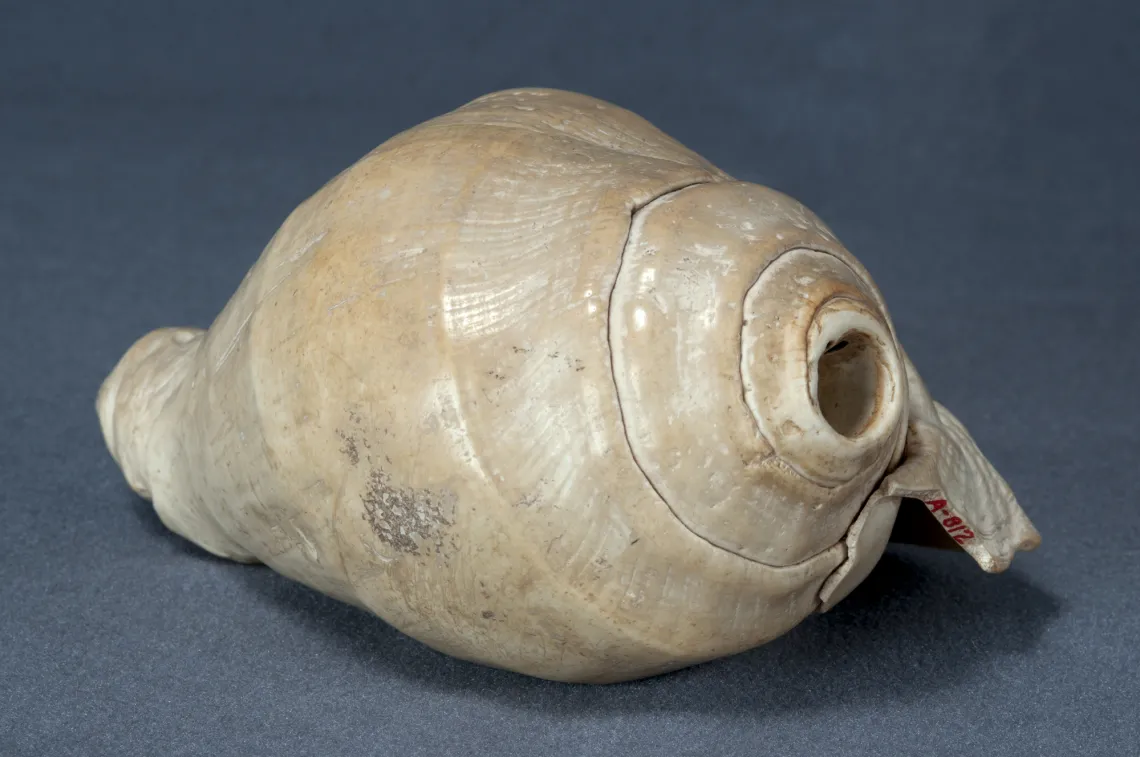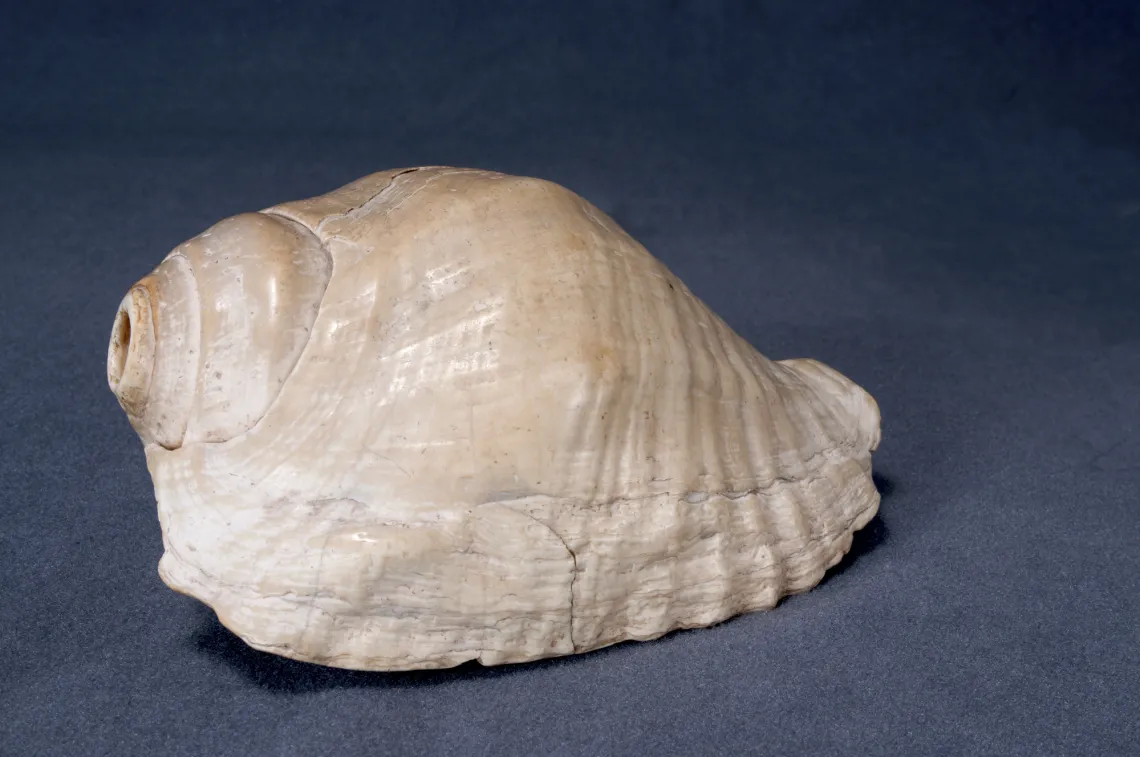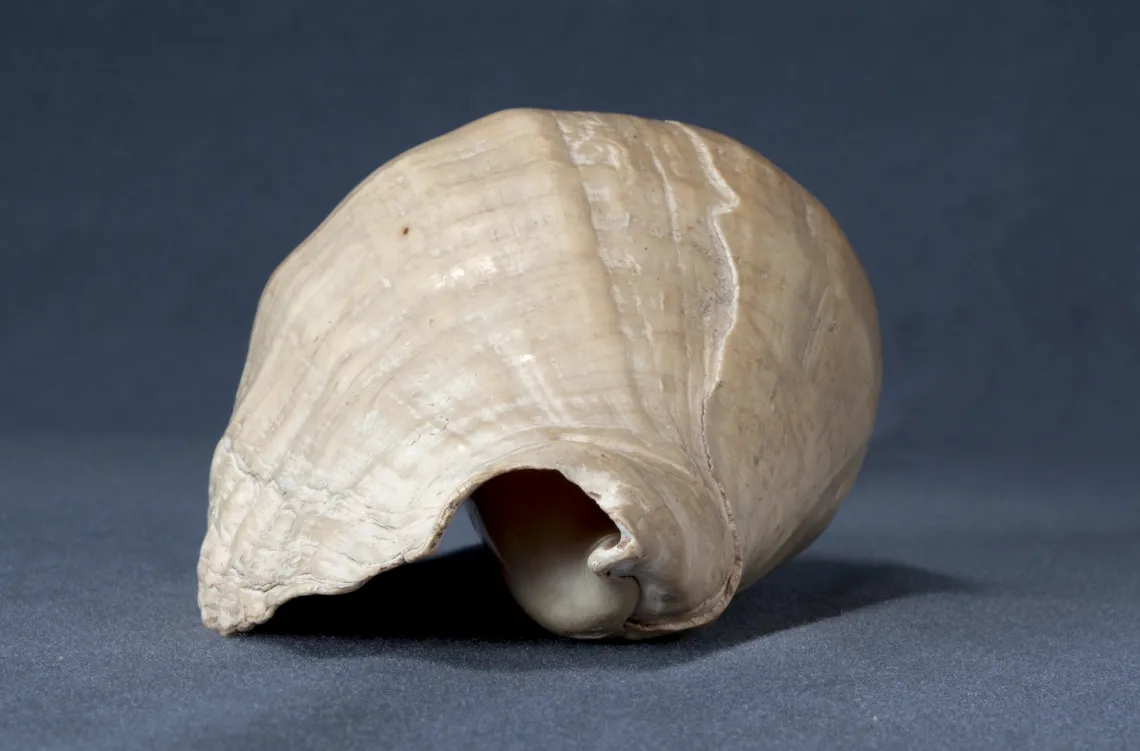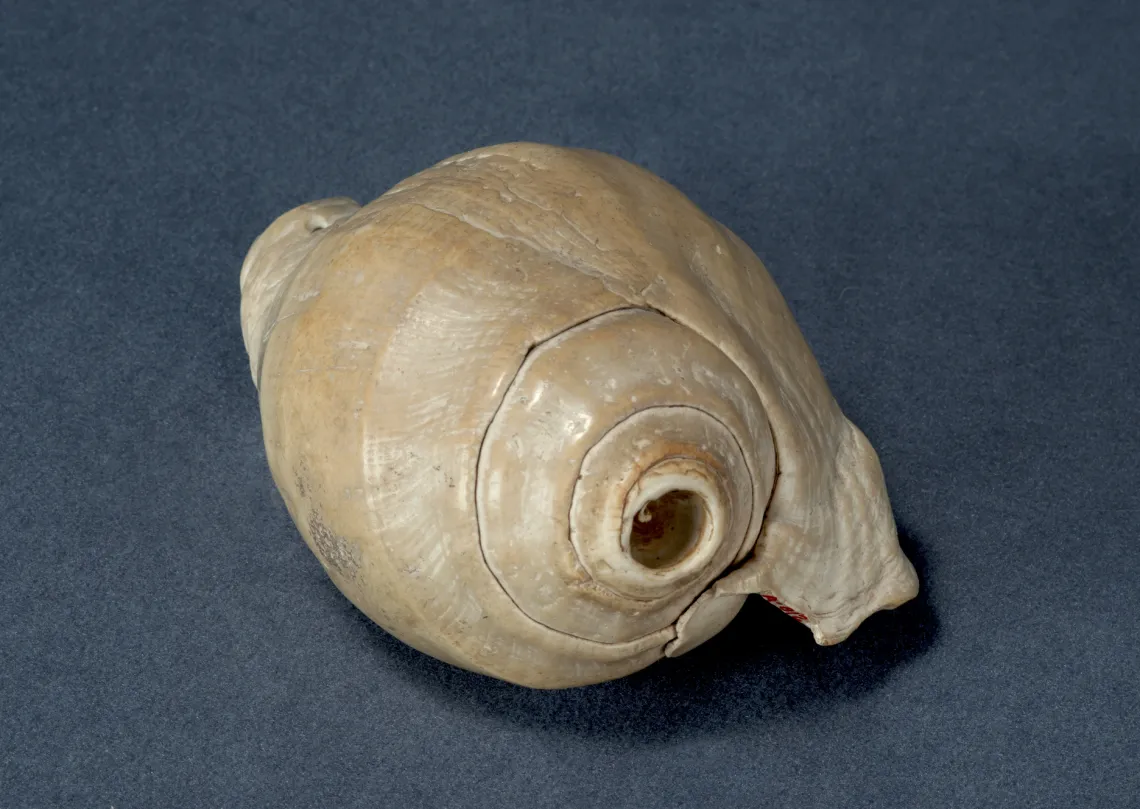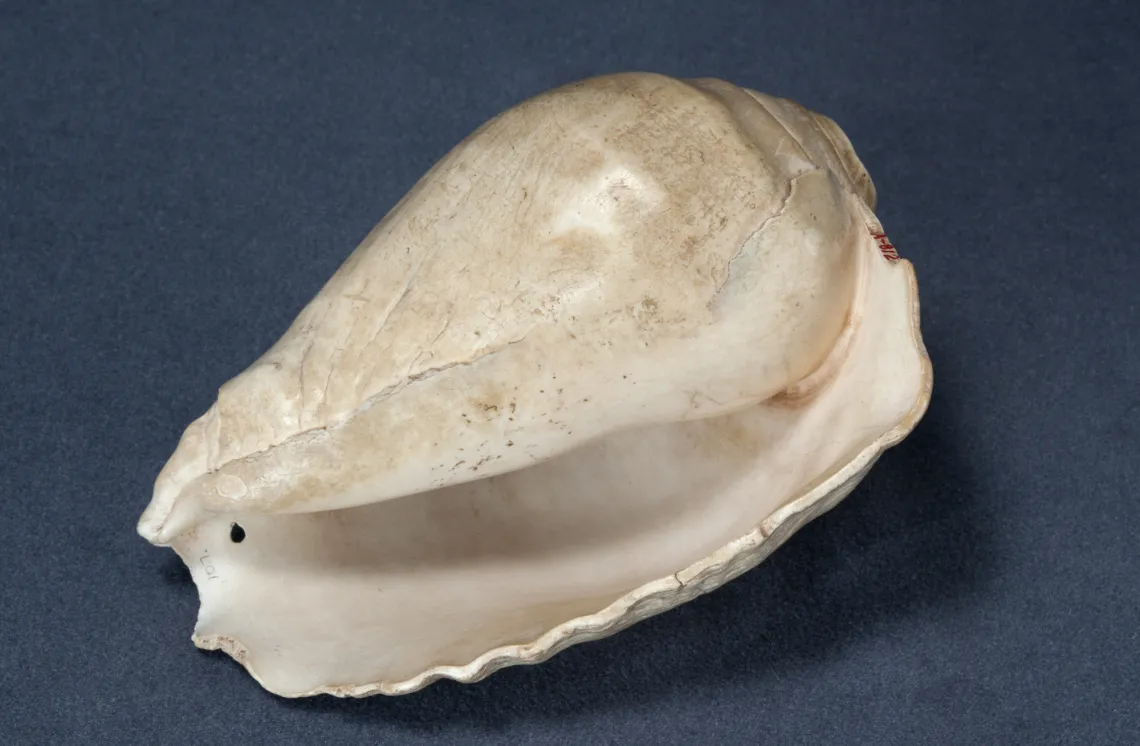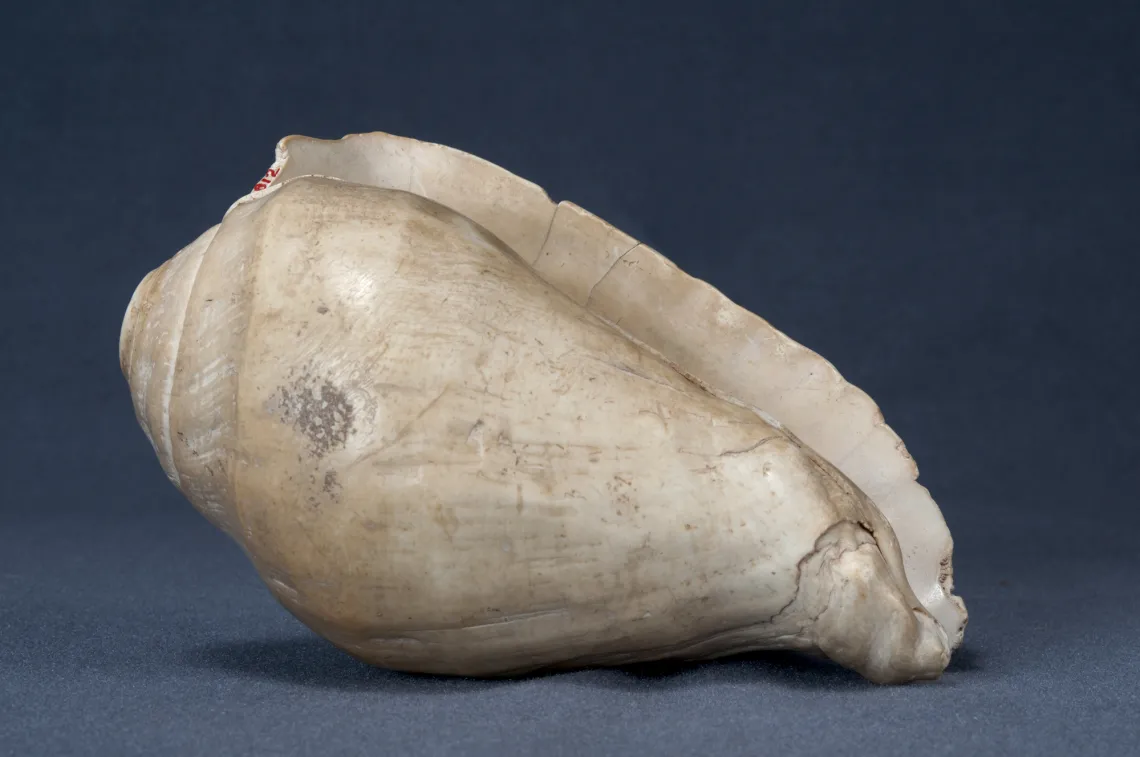
See more of this object in the slideshow below
Conch Shell Trumpet
ca. 1300–1450 C.E.
Hohokam
Sells Phase, Classic Period
Jackrabbit Ruin, AZ DD:1:6(ASM), Southern Arizona
Shell, Giant Eastern Pacific Conch (Strombus galeatus Swainson 1823)
Length: 7.5 in. (19.0 cm.), Width: 5.3 in. (13.5 cm.), Orifice diameter 0.7 in. (1.8 cm.)
University of Arizona Excavations at Jackrabbit Ruin, 1938-1939
(ASM Catalog No. 107)
This trumpet was made from the shell of a large conch (Strombus galeatus) by grinding away the spire’s apex (the pointed tip of the spiral-shaped part of the shell) to create the mouthpiece. The thick outer lip of the natural aperture has also been removed and the resulting edge was ground smooth. It was recovered from Jackrabbit Ruin, a Classic period Hohokam site in the eastern Papaguería (the portion of the Sonoran Desert bounded by the Gila River, the Colorado River, the Gulf of California, and the Tucson Mountains) with a small platform mound that is believed to have served as a community ceremonial structure.
Shell trumpets are relatively rare in archaeological sites in the US Southwest. The earliest examples have been recovered from burials at sites dating to the Colonial period (ca. 750-950 C.E.) in the Tucson Basin. However, most trumpets are from Classic period (post-1150 C.E.) sites. They are often associated with platform mounds, and are thought to be ritual paraphernalia associated with the ceremonies conducted on top of these structures.
Among the Hopi and the Zuni, conch trumpets are used in certain ceremonies associated with the plumed serpent (a powerful and dangerous supernatural being) and war. Spanish accounts indicate that Pueblo Indian warriors blew on such trumpets to signal each other and to coordinate attacks. Acoustical experiments with a modern replica have shown that the sound made by these trumpets is audible up to a mile away.
Strombus galeatus is the largest of the conchs endemic to the tropical waters of the eastern Pacific Ocean, with its range extending as far south as Ecuador and north to the head of the Gulf of California. It inhabits the grassy regions that lie between the low-tide line and a maximum depth of 15 meters.
Conch Shell Trumpet
ca. 1300–1450 C.E.
Hohokam
Sells Phase, Classic Period
Jackrabbit Ruin, AZ DD:1:6(ASM), Southern Arizona
Shell, Giant Eastern Pacific Conch (Strombus galeatus Swainson 1823)
Length: 7.5 in. (19.0 cm.), Width: 5.3 in. (13.5 cm.), Orifice diameter 0.7 in. (1.8 cm.)
University of Arizona Excavations at Jackrabbit Ruin, 1938-1939
(ASM Catalog No. 107)
References
Bayman, James M.
- 2002 Hohokam Craft Economies and the Materialization of Power. Journal of Archaeological Method and Theory 9(1):69-95.
Boekelman, Henry J.
- 1936 Shell Trumpet from Arizona. American Antiquity 2(1):27-31.
Cipriani, Roberto, Hector M. Guzman, Angel J. Vega, and Melina Lopez
- 2008 Population Assessment of the Conch Strombus galeatus (Gastropoda, Strombidae) in Pacific Panama. Journal of Shellfish Research 27(4):889–896.
Fewkes, Jesse Walter
- 1896 Pacific Coast Shells from Prehistoric Tusayan Pueblos. American Anthropologist 9(11):359-368.
Mills, Barbara J., and T. J. Ferguson
- 2008 Animate Objects: Shell Trumpets and Ritual Networks in the Greater Southwest. Journal of Archaeological Method and Theory 15(4):338–361.
Parsons, Elise Clews
- 1939 Pueblo Indian Religion. 2 volumes. University of Chicago Press, Chicago.
Vokes, Arthur W., and David A. Gregory
- 2007 Exchange Networks for Exotic Goods in the Southwest and Zuni’s Place in Them. In Zuni Origins: Toward a New Synthesis of Southwestern Archaeology, edited by David A. Gregory and David R. Wilcox, pp. 318-357. University of Arizona Press, Tucson.
Judd, Neil M.
- 1954 The Material Culture of Pueblo Bonito. Smithsonian Miscellaneous Collections, Volume 124. Smithsonian Institution, Washington, D.C. See pages 305-306 and Plate 82b. Full text available from the University of Virginia Library.







